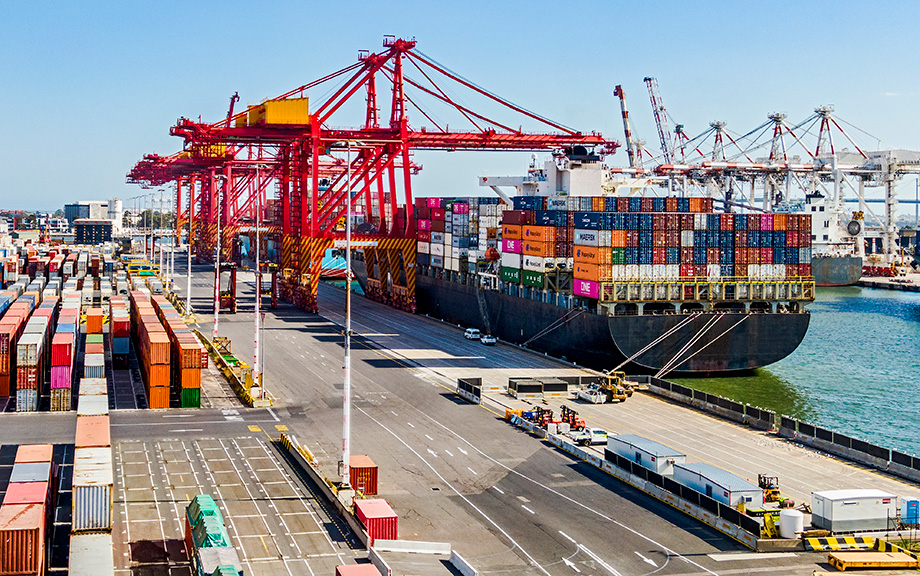Financial Intermediaries and the Changing Risk Sensitivity of Global Liquidity Flows

Global risk conditions, along with monetary policy in major advanced economies, have historically been major drivers of cross-border capital flows and the global financial cycle. So what happens to these flows when risk sentiment changes? In this post, we examine how the sensitivity to risk of global financial flows changed following the global financial crisis (GFC). We find that while the risk sensitivity of cross-border bank loans (CBL) was lower following the GFC, that of international debt securities (IDS) remained the same as before the GFC. Moreover, the changes in risk sensitivities of these flows were related to balance sheet constraints of financial institutions that were intermediating these flows.
Why Does the U.S. Always Run a Trade Deficit?

The obvious answer to the question of why the United States runs a trade deficit is that its export sales have not kept up with its demand for imports. A less obvious answer is that the imbalance reflects a macroeconomic phenomenon. Using national accounting, one can show deficits are also due to a persistent shortfall in domestic saving that requires funds from abroad to finance domestic investment spending. Reducing the trade imbalance therefore requires both more exports relative to imports and a narrowing of the gap between saving and investment spending.
Gauging the Strength of China’s Economy in Uncertain Times

Amid increasing pressure on the Chinese economy from China’s trade conflict with the U.S., assessing the strength of the Chinese economy will be an important watch point. In this post, we provide an update on China’s recent economic performance and policy changes. While China is likely to counter growth headwinds from the escalating trade tensions with additional policy stimulus, the country’s complex fiscal dynamics and the varying interpretations of the strength of its economic growth made judgments of the efficacy of China’s policy response challenging even in a more predictable environment. In this respect, we argue that aggregate credit is a simple and effective measure to gauge policy stimulus in China. At present, China’s “credit impulse”—the change in the flow of new aggregate credit to the economy relative to GDP—appears likely sufficient to allow it to muddle through with steady but not strong growth over the next year despite the intensifying trade conflict.
Will Peak Demand Roil Global Oil Markets?

“Peak oil”—the notion that the depletion of accessible petroleum deposits would soon lead to declining global oil output and an upward trend in prices—was widely debated in the late 1990s and early 2000s. Proponents of the peak supply thesis turned out to be wrong, given the introduction of fracking and other new extraction methods. Now the notion of peak oil is back, but in reverse form, with global demand set to flatten and then fade amid growing use of EVs and other low-carbon technologies. The arrival of “peak demand” would turn global oil markets into a zero-sum game: Supply growth in one region or field would simply push down prices, driving out higher-cost producers elsewhere. A key question is how U.S. producers would adapt to the new market environment.
Monetary Policy Spillovers and the Role of the Dollar

In the literature on monetary policy spillovers considered in the two previous posts, countries that would otherwise operate independently are connected to one another through bilateral trade relationships, and it is assumed that there are no frictions in currency, financial, and asset markets. But what if we introduce a number of real-world complexities, such as a dominant global currency and tight linkages across international capital markets? Given these additional factors, is it still possible to draw generalized conclusions about international policy spillovers—and can we still think of them as a fundamentally bilateral phenomenon? In our third and final post, we explore these questions by focusing on two key elements in the determination of international policy spillovers: the U.S. dollar and the Global Financial Cycle.
How Household Saving Affects Monetary Policy Spillovers

As covered in the first post in this series, the international transmission of monetary policy shocks features positive output spillovers when the so-called expenditure-switching effect is sufficiently large. Departing from textbook analysis, this post zooms in on the implications of differences across market participants with respect to their consumption preferences and ability to insure against income risk. The key message is that these features can, at least theoretically, change the impact of spillovers from positive to negative as well as alter their overall magnitude. These aspects of the international transmission mechanism are especially relevant when addressing spillovers from advanced to emerging economies.
Monetary Policy Spillovers in the Global Economy

Understanding cross-border interdependencies and inspecting the international transmission mechanism of policy shocks is the raison d’être of open-economy macroeconomics as an intellectual discipline. The relevance for the policy debate is pervasive: over and over in the history of the international monetary system national policymakers have pointed at—and voiced concerns about—the effects of policy actions undertaken in foreign countries on the outlook and financial conditions in their own domestic economies. The most recent example involves the spillovers of tighter monetary policies aimed at addressing the inflationary spikes associated with the COVID-19 pandemic. In this three-part series, we provide a non-technical introduction to the multifaceted literature on global spillovers, building in particular on our own research. This post introduces the subject and offers an overview of the classic transmission channels.
Supply and Demand Drivers of Global Inflation Trends

Our previous post identified strong global components in the slow-moving and persistent dynamics of headline consumer price index (CPI) inflation in the U.S. and abroad. We labeled these global components as the Global Inflation Trend (GIT), the Core Goods Global Inflation Trend (CG-GIT) and the Food & Energy Global Inflation Trend (FE-GIT). In this post we offer a narrative of the drivers of these global inflation trends in terms of shocks that induce a trade-off for monetary policy, versus those that do not. We show that most of the surge in the persistent component of inflation across countries is accounted for by global supply shocks—that is, shocks that induce a trade-off for central banks between their objectives of output and inflation stabilization. Global demand shocks have become more prevalent since 2022. However, had central banks tried to fully offset the inflationary pressures due to sustained demand, this would have resulted in a much more severe global economic contraction.
Global Trends in U.S. Inflation Dynamics

A key feature of the post-pandemic inflation surge was the strong correlation among inflation rates across sectors in the United States. This phenomenon, however, was not confined to the U.S. economy, as similar inflationary pressures have emerged in other advanced economies. As generalized as the inflation surge was, so was its decline from the mid-2022 peak. This post explores the common features of inflation patterns in the U.S. and abroad using an extension of the Multivariate Core Trend (MCT) Inflation model, our underlying inflation tracker for the U.S. The Global MCT model purges transitory noise from international sectoral inflation data and quantifies the covariation of their persistent components—in the form of global inflation trends—along both country and sectoral dimensions. We find that global trends play a dominant role in determining the slow-moving and persistent dynamics of headline consumer price index (CPI) inflation in the U.S. and abroad, both over the pre-pandemic and post pandemic samples.
Do Import Tariffs Protect U.S. Firms?

One key motivation for imposing tariffs on imported goods is to protect U.S. firms from foreign competition. By taxing imports, domestic prices become relatively cheaper, and Americans switch expenditure from foreign goods to domestic goods, thereby expanding the domestic industry. In a recent Liberty Street Economics post, we highlighted that our recent study found large aggregate losses to the U.S. from the U.S.-China trade war. Here, we delve into the cross-sectional patterns in search of segments of the economy that may have benefited from import protection. What we find, instead, is that most firms suffered large valuation losses on tariff-announcement days. We also document that these financial losses translated into future reductions in profits, employment, sales, and labor productivity.










 RSS Feed
RSS Feed Follow Liberty Street Economics
Follow Liberty Street Economics